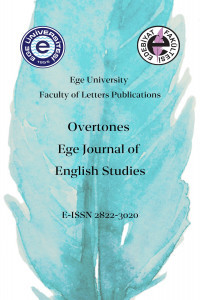“The Lady of Shalott” as a Metaphor for Class Relations under Capitalism
“The Lady of Shalott” as a Metaphor for Class Relations under Capitalism
The Lady of Shalott, Marxism, Class Relations, Victorian Society Dialectics,
___
- Chadwick, Joseph. “A Blessing and a Curse: The Poetics of Privacy in Tennyson’s ‘The Lady of Shalott.’” Victorian Poetry, vol. 24, no. 1, 1986, pp. 13–30. JSTOR, http://www.jstor.org/stable/40002181. Accessed 28 Jul. 2022.
- Giddens, Anthony, and David Held, editors. Classes, Power, and Conflict: Classical and Contemporary Debates. Macmillan, 1982.
- Marx, Karl, and Friedrich Engels. Economic and Philosophic Manuscripts of 1844 / and the Communist Manifesto. Translated by Martin Milligan, Prometheus Books, 1988.
- Marx, Karl, and Friedrich Engels. The German Ideology: Including Theses on Feuerbach and Introduction to the Critique of Political Economy. Prometheus Books, 1998.
- Marx, Karl. A Contribution to the Critique of Political Economy. Translated by Nahum Isaac Stone, The International Library Publishing Co, 1904.
- Marx, Karl. Capital: A Critique of Political Economy. Translated by Ben Fowkes, Penguin, 1992.
- Marx, Karl. Wage-Labour and Capital ; &, Value, Price, and Profit. International Publishers, 1995.
- Plasa, Carl. “‘Cracked from Side to Side’: Sexual Politics in ‘The Lady of Shalott.’” Victorian Poetry, vol. 30, no. 3/4, 1992, pp. 247–63. JSTOR, http://www.jstor.org/stable/40002467. Accessed 1 Aug. 2022.
- Shannon, Edgar F. “Poetry as Vision: Sight and Insight in ‘The Lady of Shalott.’” Victorian Poetry, vol. 19, no. 3, 1981, pp. 207–23. JSTOR, http://www.jstor.org/stable/40002004. Accessed 12 Aug. 2022.
- Shelley, Percy Bysshe. “To a Sky-Lark.” Shelley’s Poetry & Prose: Authoritative Texts and Criticism, edited by Donald H. Reiman and Sharon B. Powers, Norton, New York, 1977, pp. 226–229.
- Tennyson, Alfred, and Alfred Tennyson. “The Lady of Shalott.” Tennyson: A Selected Edition, edited by Christopher Ricks, Routledge, Abingdon, 2014, pp. 20–27.
- Başlangıç: 2022
- Yayıncı: Ege Üniversitesi
Hey, Hey, Hey, It’s Fat Albert: Bill Cosby’s Junk-yard Paradise
Recuperating Father(s) and Retracing “I” in Maxine Hong Kingston’s China Men
Elusive Idea of Nationhood and Bifurcated Identity in Amitav Ghosh’s The Glass Palace
Review: Mass Media/Mass Culture: An Introduction by James R. Wilson and S. Roy Wilson
Affective Boundaries and Replication in Wuthering Heights
Intercultural Marriage: Contemporary Expressions of Displacement/Emplacement in British Fiction
